Recorded Webinar: September 29, 2022
Topic:
The Spectrum above 100 GHz: Reality Check by the mmWave Coalition
Abstract:
Wireless communications in the sub-terahertz and terahertz (THz) bands (or broadly speaking, from 100 GHz up to 10 THz) have been envisioned by both academia and industry as a key enabler of future sixth generation (6G) wireless networks. In the last five years, there has been major progress towards closing the so-called THz gap: testing, infrastructure and user technologies are quickly evolving; misconceptions relating to terahertz-wave propagation and interference have been cleared; and innovative signal processing, communication and networking protocols have been proposed; all while new question marks have risen, such as those concerning to the security of terahertz links or the coexistence between active and passive users of the spectrum above 100 GHz.
In this interactive panel, several members of the mmWave Coalition will provide an updated look at the opportunities and challenges in the spectrum above 100 GHz and jointly identify the next key milestones for the practical development and adoption of the field.
Panelists
Mark Cudak, Nokia
Moderator
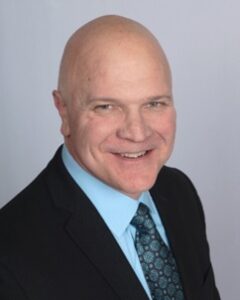
Mark Cudak is a Nokia Bell Labs Fellow and a Department Head in the Radio Interface and Access Group with Nokia Standards in Chicago. He leads a team focusing on air-interface evolution including 5G and 6G. He and his team are active in the 3GPP and Open RAN standards working on physical layer topics studying system performance, link performance, transceiver architectures, network architectures and deployment scenarios. Prior to joining Nokia in 2011, Mark was with Motorola for 20 years where he worked on a variety of wireless data systems including APCO 25 and cellular standards from 2G to 4G. Mark has over 40 issued patents, was a Motorola Dan Noble Fellow and holds a M.S. in electrical engineering from the University of Illinois at Urbana-Champaign.
Amitava Ghosh, Nokia
Topic: THz Communications Applications
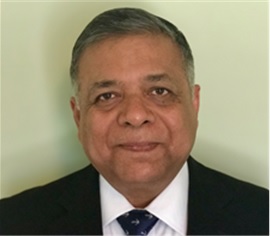
Amitabha (Amitava) Ghosh (F’15) is a Nokia Fellow and works at Nokia Standards and Strategy. He joined Motorola in 1990 after receiving his Ph.D in Electrical Engineering from Southern Methodist University, Dallas. Since joining Motorola he worked on multiple wireless technologies starting from IS-95, cdma-2000, 1xEV-DV/1XTREME, 1xEV-DO, UMTS, HSPA, 802.16e/WiMAX and 3GPP LTE. He has 60 issued patents, has written multiple book chapters and has authored numerous external and internal technical papers. He is currently working on 5G Evolution and 6G technologies. Recently, he was elected chair of the NextGA (an US 6G initiative) National Roadmap Working Group. His research interests are in the area of digital communications, signal processing and wireless communications. He is the recipient of 2016 IEEE Stephen O. Rice and 2017 Neal Shephard prize, member of IEEE Access editorial board and co-author of the books titled “Essentials of LTE and LTE-A” and “5G Enabled Industrial IoT Network”.
Ozge Koymen, Qualcomm Technologies, Inc.
Topic: THz Communications
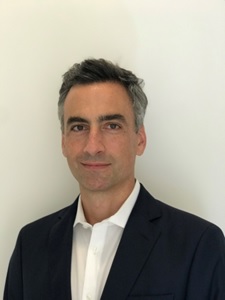
Ozge Koymen is a Senior Director of Technology at Qualcomm Technologies, Inc. where he has been since 2006. He has led the 5G/6G millimeter-wave program within Qualcomm R&D since early 2015, from early conceptual evaluation to commercial deployment. His previous areas as a technical contributor includes Wireless Backhaul, Small Cells, LTE-D, LTE and UMB.
Prior to Qualcomm, he was a member of Flarion Technologies developing a pioneering OFDMA cellular system, Flash-OFDM, during 2003-2006. His earlier work experience includes full-time and consulting work for Impinj, Inc. (2000-2003) and TRW (1996-2000).
He received the B.S. in Electrical and Computer Engineering from Carnegie Mellon University in 1996 and the M.S. and Ph.D. in Electrical Engineering from Stanford University in 1997 and 2003, respectively.
Michael J. Marcus, Marcus Spectrum Solutions
Topic: Spectrum Policy
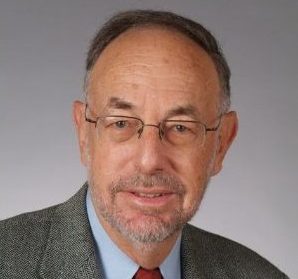
Michael J. Marcus is a native of Boston and received S.B. and Sc.D. degrees in electrical engineering from MIT. Prior to joining the FCC in 1979, he worked at Bell Labs on the theory of telephone switching, served in the U.S. Air Force where he was involved in underground nuclear test detection research, and analyzed electronic warfare issues at the Institute for Defense Analyses. At FCC his work focused on proposing and developing policies for cutting edge radio technologies such as spread spectrum/CDMA and millimeter waves. Wi-Fi is one outcome of his early leadership. The total amount of spectrum he proposed for unlicensed use and directed the drafting of implementing rules was 8.234 GHz. He also participated in complex spectrum sharing policy formulation involving rulemakings such as ultrawideband and MVDDS. Awarded a Mike Mansfield Fellowship in 1997, he studied the Japanese language and spent a year at the FCC’s Japanese counterpart. He retired from FCC in March 2004 after servicing a senior technical advisor to the Spectrum Policy Task Force and codirecting the preparation of the FCC’s cognitive radio rulemaking. Immediately after retirement he lived in Paris France for 3 years, consulting for US and European clients. In 2006 he was appointed Special Advisor to Mrs. Viviane Reding, European Commissioner for Information Society & Media.He is now Director of Marcus Spectrum Solutions LLC, an independent consulting firm based in the Washington DC area focusing on wireless technology and policy. He is also Adjunct Professor of Electrical and Computer Engineering and Principal Research Scientist, Institute for the Wireless Internet of Things at Northeastern University. He was recognized as a Fellow of the IEEE “for leadership in the development of spectrum management policies”, received in 1994 IEEE-USA’s first Electrotechnology Transfer Award, and received in 2013 the IEEE ComSoc Award for Public Service in the Field of Telecommunications “For pioneering spectrum policy initiatives that created modern unlicensed spectrum bands for applications that have changed our world.
Daniel Mittleman, Brown University
Topic: THz Security
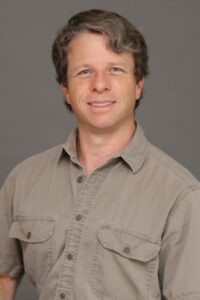
Dr. Mittleman received his B.S. in physics from the Massachusetts Institute of Technology in 1988, and his M.S. in 1990 and Ph.D. in 1994, both in physics from the University of California, Berkeley, under the direction of Dr. Charles Shank. He then joined AT&T Bell Laboratories as a post-doctoral member of the technical staff. Dr. Mittleman joined the ECE Department at Rice University in September 1996. In 2015, he moved to the School of Engineering at Brown University. His research interests involve the science and technology of terahertz radiation. He is a Fellow of the OSA, the APS, and the IEEE, and is a 2018 recipient of the Humboldt Research Award. In 2018-2020, he served a three-year term as Chair of the International Society for Infrared Millimeter and Terahertz Waves, and received the Society’s Exceptional Service Award in 2022.
Roger Nichols, Keysight Technologies
Topic: THz Equipment
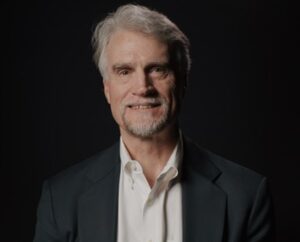
Roger Nichols is an acknowledged subject matter expert in mobile wireless communications design and measurement technologies. He has 37 years of engineering and management experience at Hewlett-Packard, Agilent, and Keysight Technologies spanning roles in R&D, marketing, and manufacturing. Having worked on every wireless generation he has been directing Keysight’s 6G program since its inception in 2019. He is a member of the FCC Technical Advisory Council and is also the strategic director of Keysight’s work in wireless standards.
Roger holds a BSEE from the University of Colorado, Boulder.
Ted Rappaport, NYU WIRELESS
Topic: THz Propagation
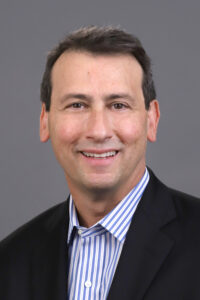
Theodore S. Rappaport is the David Lee/Ernst Weber Professor at New York University (NYU) and holds faculty appointments in the Electrical and Computer Engineering Department, the Courant Computer Science Department, and the NYU Langone School of Medicine. He founded NYU WIRELESS, a multidisciplinary research center, and the wireless research centers at the University of Texas Austin (WNCG) and Virginia Tech (MPRG). His research has provided fundamental knowledge of wireless channels used to create the first Wi-Fi standard (IEEE 802.11), the first U.S. digital cellular TDMA and CDMA standards, the first public Wi-Fi hotspots, and more recently proved the viability of millimeter-wave and sub-THz frequencies for the cellular industry’s push to 5G, 6G, and beyond. He has authored popular engineering textbooks and co-founded two wireless communications companies that were sold to publicly traded firms. He is a member of the National Academy of Engineering, a Fellow of the National Academy of Inventors, and is a member of the Wireless History Foundation Hall of Fame. He founded TSR Technologies, Inc. and Wireless Valley Communications, Inc., which were both sold to publicly traded companies.
Gerhard Schoenthal, Virginia Diodes, Inc.
Topic: THz Hardware
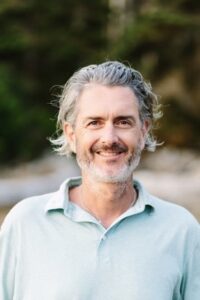
Gerhard received his BS in Physics from the US Naval Academy in 1992 and his Ph.D. in Physics from the University of Virginia in 2003. After graduating from the Naval Academy, he served on active duty in the US Navy for 5 years on the USS Chandler and the USS John A. Moore. After graduate school, he worked as a Senior Process Engineer at Intel PTD in 2003 and 2004. For the past 18 years, he has served in many roles at Virginia Diodes, Inc. the world’s leading mmWave and THz test and measurement and components company where he is currently the Chief Operations Officer.
